A small animal that looks like a dog sniffs its way around Sheremetyevo International Airport. Now and then, quickly and without shame, it sticks its small wet nose into people's bags. Passengers are amused, as the animal seems quite friendly. It looks like it is enjoying its work.
The creature is a jackal-dog hybrid originating from crossbreeding North Caucasian jackals and ancient Arctic reindeer-herding laikas. For the past 14 years these hybrid animals have been working for the security department of Russia's largest airline Aeroflot at Moscow's Sheremetyevo Airport.
These animals are now being used by Russian scientists to test a new method for detecting explosives and other hazardous materials. This new technique was developed and patented together with Aeroflot in March 2015. The technology tracks changes in the animals' central nervous system, which improves their detection abilities.
A jackal's nose for the job
Specially-bred canines helping to find explosives at Moscow airport
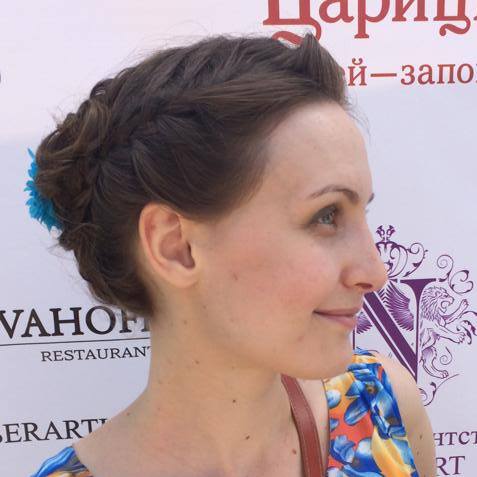
Victoria Zavyalova
A new method of detecting explosives has been tested on jackal-dog hybrids at Moscow's Sheremetyevo Airport. The groundbreaking approach is based on analyzing the bioelectric activity of the animals' brain and central nervous system.
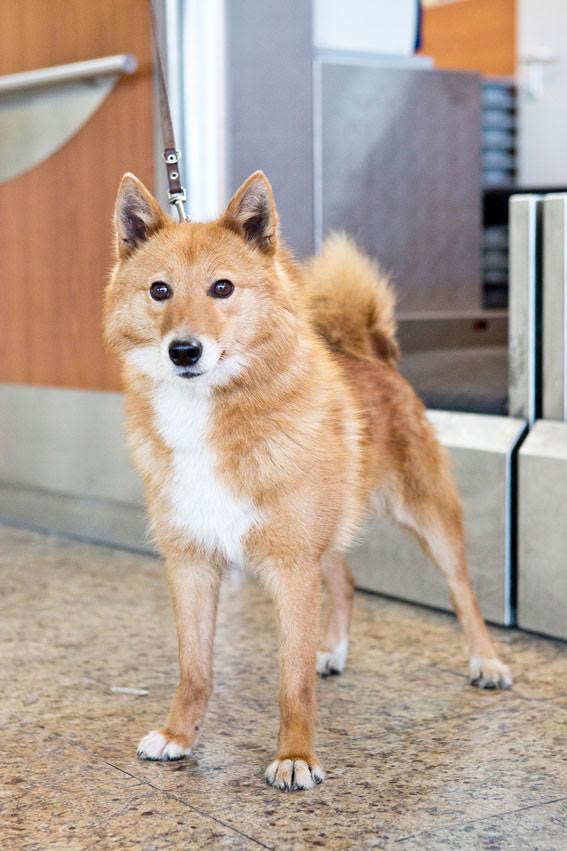
Watch the video of Jackal-dog hybrids working at Moscow's Sheremetyevo Airport:
High-tech jackal-dogs
The idea to crossbreed a dog and a jackal was first proposed by Soviet biologist Klim Sulimov back in the late 1980s when he was working at the Interior Ministry. Therefore, this hybrid is sometimes called the Sulimov dog (editor's note: this hybrid is often simply referred to as a dog, therefore references to "dog" below refer to a jackal-dog hybrid unless otherwise noted).
"It is not a breed," Sulimov explains. "We have reproduced the initial 'pre-breed norm' of a dog, the way it used to be 100,000 years ago. In other words before humans began to 'specialize' it, breeding it for hunting, guarding, etc. Any specialization limits possibilities."
Sulimov dogs have a superior sense of smell than ordinary dogs, but even they can make mistakes. After all, these animals like to be rewarded for their work with a treat, such as when they find explosives in a terrorist's luggage. But sometimes they just want to get a treat. This can lead to mistakes in "signal behavior" when an animal indicates to its handler that it has found something, while there is nothing suspicious in the bag in question.
"It is not a breed," Sulimov explains. "We have reproduced the initial 'pre-breed norm' of a dog, the way it used to be 100,000 years ago. In other words before humans began to 'specialize' it, breeding it for hunting, guarding, etc. Any specialization limits possibilities."
Sulimov dogs have a superior sense of smell than ordinary dogs, but even they can make mistakes. After all, these animals like to be rewarded for their work with a treat, such as when they find explosives in a terrorist's luggage. But sometimes they just want to get a treat. This can lead to mistakes in "signal behavior" when an animal indicates to its handler that it has found something, while there is nothing suspicious in the bag in question.
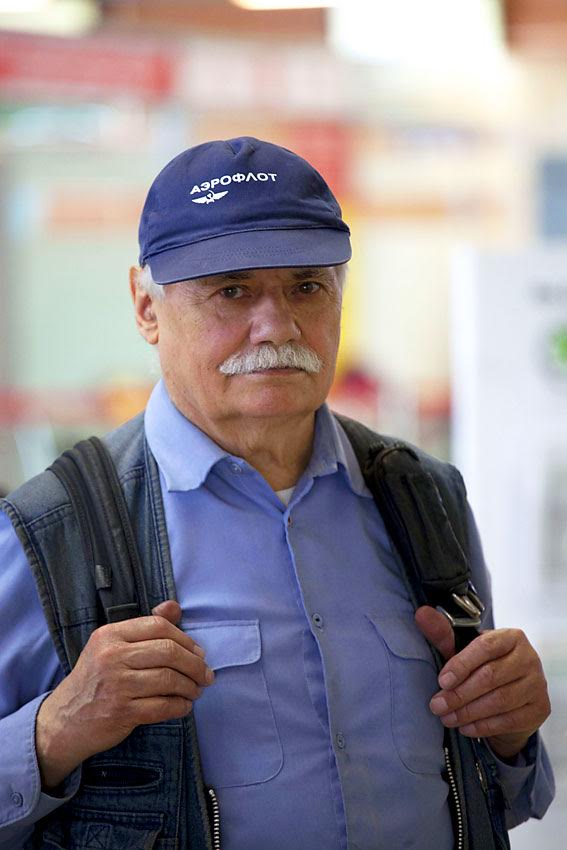
Klim Sulimov, biologist
Devices less accurate, but more trusted?
The new method being used has increased detection accuracy to nearly 100 percent
"Any kinds of devices, even the most expensive ones, have certain limitations in their working characteristics," says Azat Zaripov, deputy director of the Aviation Security Department at Aeroflot. "A dog's sense of smell is 10 times better. Yet people trust them more, because they provide information based on precise measurements." Until recently, Aeroflot has been using a system of multiple checks, with three jackal-dogs following one another and checking each other's findings.
Because of errors in "signal behavior," the accuracy achieved by the traditional dog method is only 60 percent, says Zaripov. However, the new method being used has increased detection accuracy to nearly 100 percent. Scientists have conducted about 1,000 experimental tests and only eight of them have recorded a mistake.
Because of errors in "signal behavior," the accuracy achieved by the traditional dog method is only 60 percent, says Zaripov. However, the new method being used has increased detection accuracy to nearly 100 percent. Scientists have conducted about 1,000 experimental tests and only eight of them have recorded a mistake.
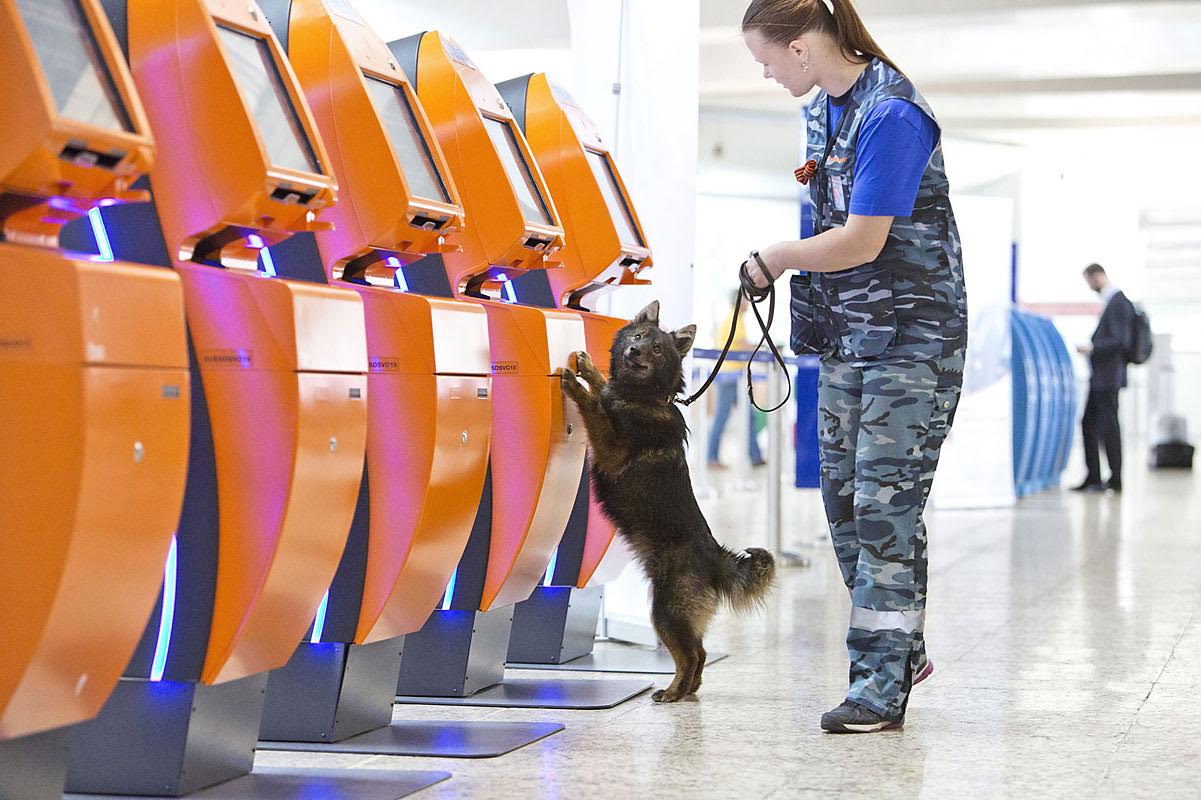
"We have decided not to use secondary signs, like signal behavior, which depends on many factors, but instead use a body's reaction – those signals that are generated by the dog's central nervous system," Zaripov explains. As a result, Aeroflot has developed a new hardware-software complex in cooperation with the Moscow-based A.I. Burnazyan Federal Medical Center of Biophysics.
"Jackals have a sharper sense of smell than wolves. Jackals tolerate high temperatures very well. As a second element we took an Arctic reindeer-herding laika, which lives in -70 C. Can you imagine this? Our animals can work both in the United Arab Emirates and at low temperatures. This is our advantage. Shepherds feel cold at -20 C."
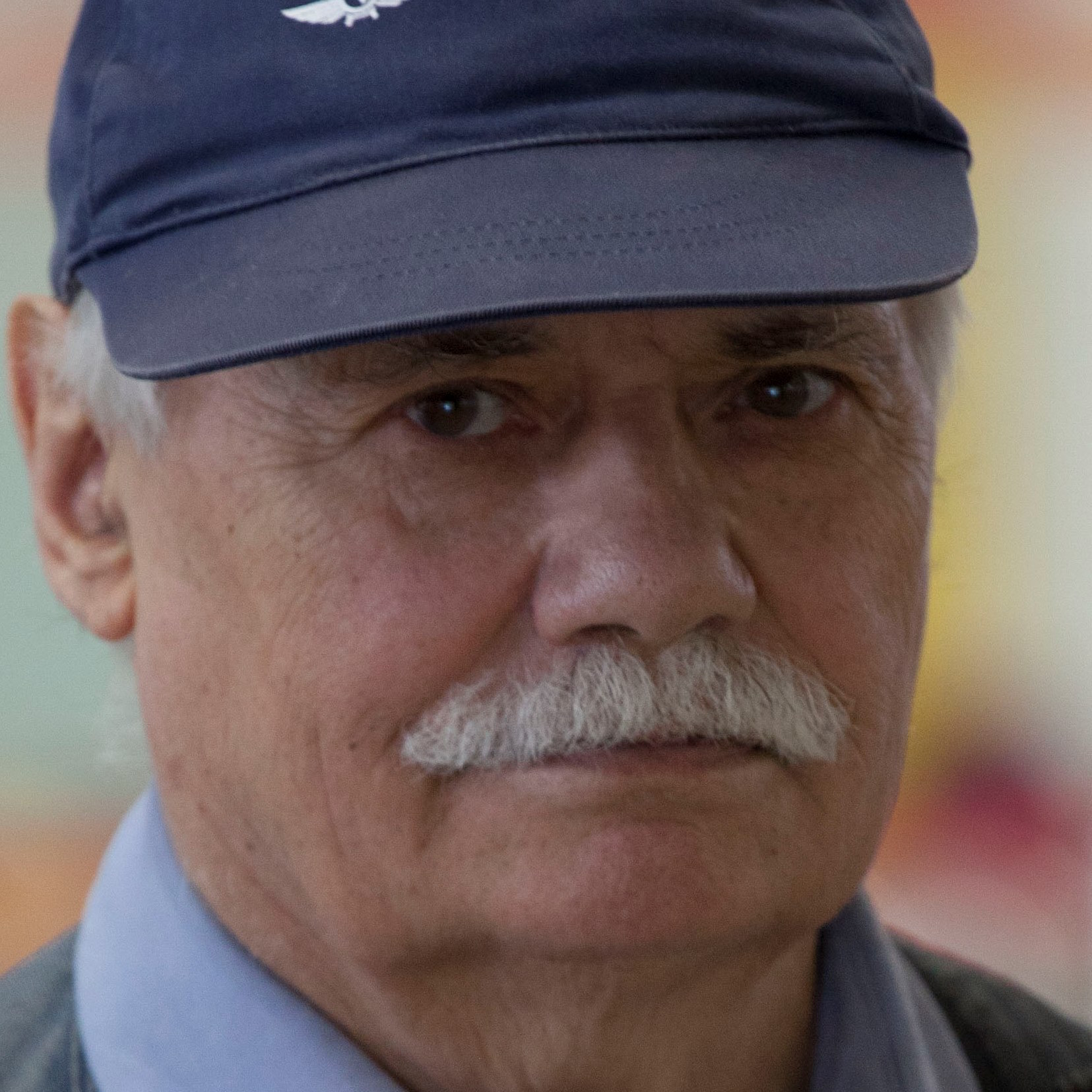
Klim Sulimov
Biologist
New method can detect false signals
The new method analyzes the bioelectric activity of an animal's brain along seven channels. To double-check the figures, an electrocardiogram is taken and the jackal-dog's breathing is monitored. Electrodes are attached to the detector animal's head by a special cap made of neoprene. The full range of reactions of the animal's central nervous system is then transmitted to a computer in real time mode.
"At the moment, we are in the first phase of this work," Zaripov told RBTH. "We have a working model. The hardware is rather bulky still, although even our small dogs can carry it."
"At the moment, we are in the first phase of this work," Zaripov told RBTH. "We have a working model. The hardware is rather bulky still, although even our small dogs can carry it."
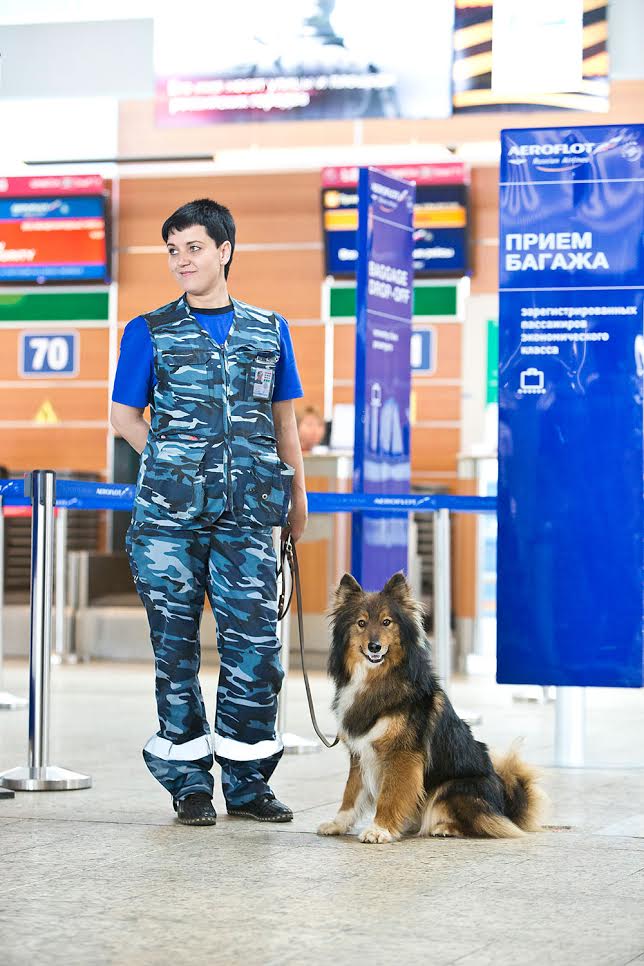
Among other things, the new method makes it possible to detect "a false sit" (when a dog sits to signal that it has found something)
Among other things, the new method makes it possible to detect "a false sit" (when a dog sits to signal that it has found something). "In traditional signal behavior, 'a dog's trick' is hard to detect: The dog does not smile, it does not wink," says Zaripov. "In this case, however, an encephalogram shows that the dog has a conscience. Deep down it knows that it has made a mistake. The reaction of its central nervous system is completely different."
Scientists are currently gathering laboratory data. In the future, according to the masterminds behind this project, the animals' data will be transmitted to the airport security center or even straight to the handlers' iPad or smartphone. They will receive a signal, green or red, as to whether the animal is correct or not. "There will be no sound signal: The dog should not know that we know what it is thinking," Zaripov adds.
Scientists are currently gathering laboratory data. In the future, according to the masterminds behind this project, the animals' data will be transmitted to the airport security center or even straight to the handlers' iPad or smartphone. They will receive a signal, green or red, as to whether the animal is correct or not. "There will be no sound signal: The dog should not know that we know what it is thinking," Zaripov adds.
"In traditional signal behavior, 'a dog's trick' is hard to detect: The dog does not smile, it does not wink. In this case, however, an encephalogram shows that the dog has a conscience. Deep down it knows that it has made a mistake. The reaction of its central nervous system is completely different."
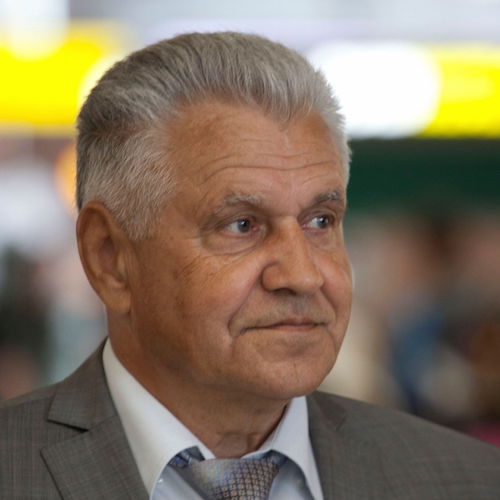
Azat Zaripov
Deputy director of the Aviation Security Department at Aeroflot
Psychophysical profiling for jackal-dog hybrids
At Aeroflot's kennels, puppies are trained beginning at three months, although they start to be taken to the airport from the age of one month to help them get used to their future "place of employment." The first step in their training is to get them to sit. Animal handlers lead three puppies one by one into the training room.
The first task for the puppies, which have between 10 and 35 percent jackal blood running through their veins, is to sit at the sound of a clicker. They all do it well. The last to be led into the room is a three-month-old puppy called Zaika. The RBTH photographer begins to click his fingers to attract the puppy's attention. Zaika gets flustered, runs away and, just like a shy child, hides behind the legs of Elena Batayeva, the head of the Aeroflot dog training service.
"Who do the puppies get attached to?" I ask her. "You seem to be like parents to them."
"Generally speaking, a dog gets attached to the person it works with," Batayeva explains. "However, here we have a system whereby everybody works with everybody."
The first task for the puppies, which have between 10 and 35 percent jackal blood running through their veins, is to sit at the sound of a clicker. They all do it well. The last to be led into the room is a three-month-old puppy called Zaika. The RBTH photographer begins to click his fingers to attract the puppy's attention. Zaika gets flustered, runs away and, just like a shy child, hides behind the legs of Elena Batayeva, the head of the Aeroflot dog training service.
"Who do the puppies get attached to?" I ask her. "You seem to be like parents to them."
"Generally speaking, a dog gets attached to the person it works with," Batayeva explains. "However, here we have a system whereby everybody works with everybody."
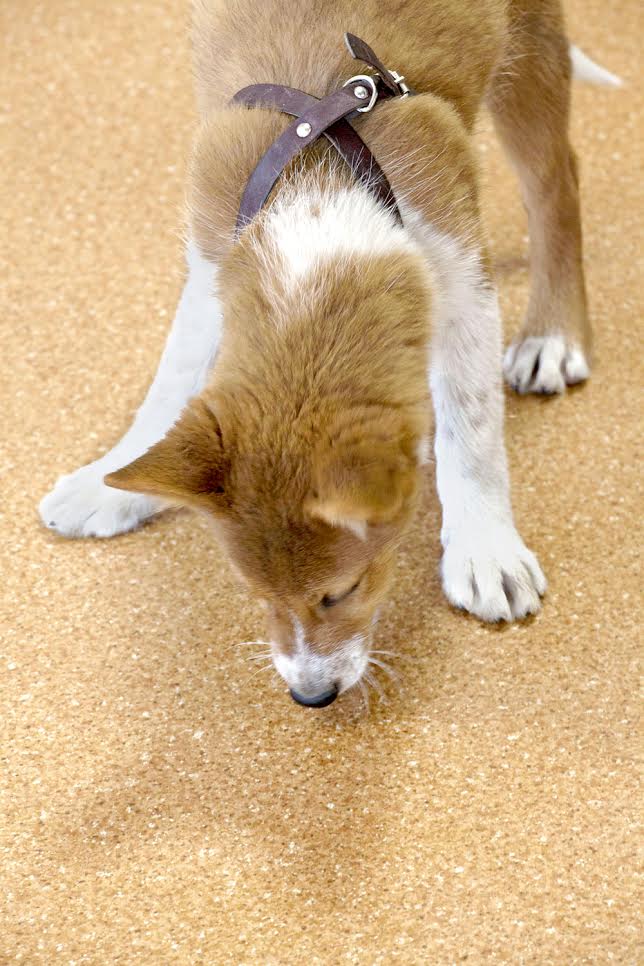
Puppies have between 10 and 35 percent jackal blood running through their veins
"Generally speaking, a dog gets attached to the person it works with. However, here we have a system whereby everybody works with everybody."

Elena Batayeva
Head of the Aeroflot dog training service
At Aeroflot, jackal-dogs are not linked to a particular handler. After birth, a puppy passes through the hands of all of their animal handlers. There are cases when a jackal-dog lacks the talent or desire to work at an airport. "And why not?" Sulimov says. "They are like people, they are all different." Those puppies end up as pets in ordinary families. The authors of the project believe that a dog-profiling complex may result in a new system of "professional specialization."
"Since we can read dogs' central nervous system, we have decided to create their psychophysical passports," says Zaripov. "We are now conducting some tests to fine-tune the software. We shall be able to decide which puppies should be used where. Some may be good at detecting. Others, who are more aggressive, could be of more use as guard dogs." In other words, instead of spending two to three years on a standard training program, an animal could be trained in a particular field that suits it best from the beginning.
"Since we can read dogs' central nervous system, we have decided to create their psychophysical passports," says Zaripov. "We are now conducting some tests to fine-tune the software. We shall be able to decide which puppies should be used where. Some may be good at detecting. Others, who are more aggressive, could be of more use as guard dogs." In other words, instead of spending two to three years on a standard training program, an animal could be trained in a particular field that suits it best from the beginning.
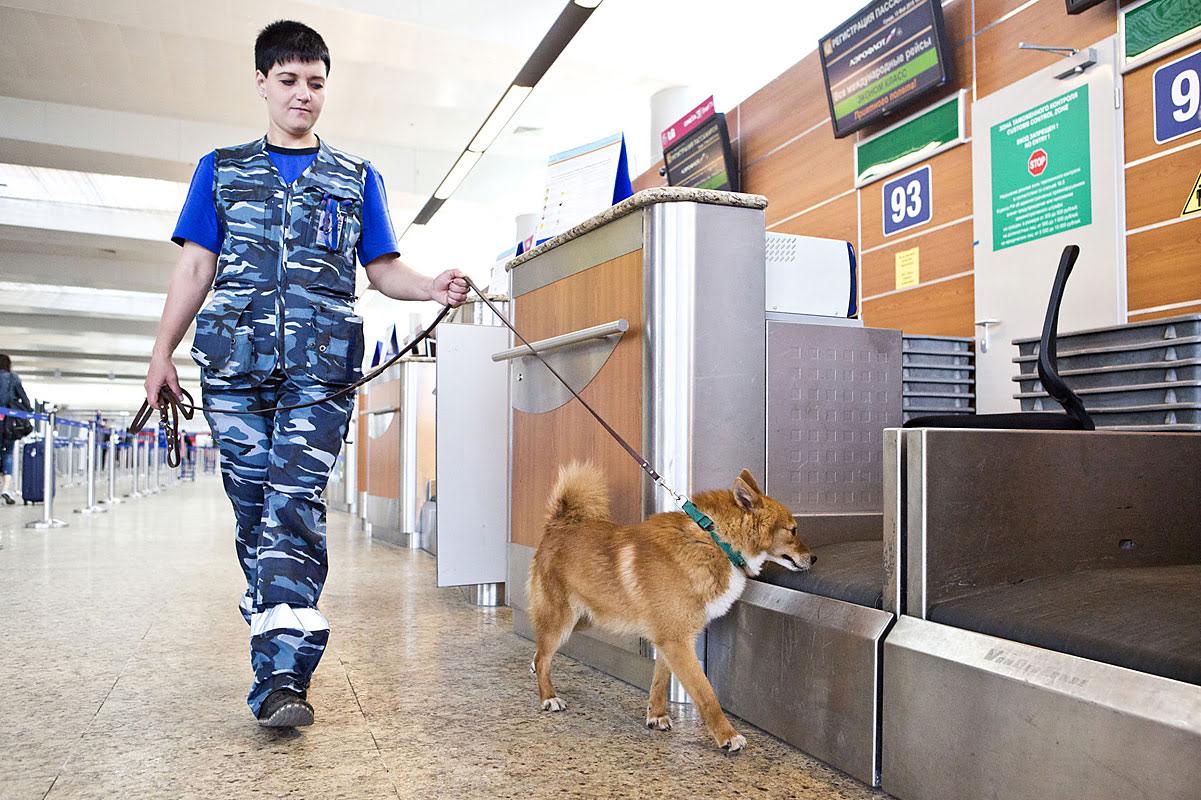
At Aeroflot's kennels, puppies are trained beginning at three months
"The idea to crossbreed dogs, jackals and laikas came about, when I was working for the police. It was 1965. The USSR didn't have organized crime at the time, but a drug mafia had started to evolve. We didn't have any equipment in those days and needed animals that might be able to look for drugs. I managed to train dogs to search for hashish and opium. In the 1990s, after the dissolution of the Soviet Union, my job was almost ruined. I couldn't take dogs home: there were 11 of them at the time. So I was looking for different places to hold them, trying to help them survive somehow, and then I began working with Aeroflot."

Klim Sulimov
Biologist
Cancer-fighting jackal-dogs
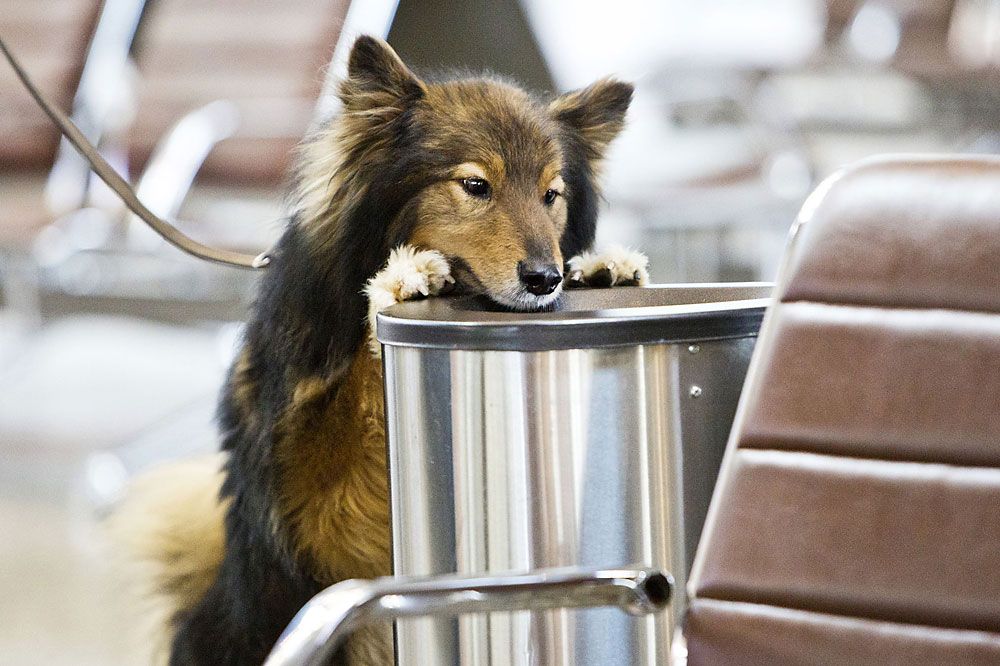
This dog is a mutation, a reversion back to the reindeer herding laika from the place where they have evolved, i.e. Lapland. As a result of genetics, this wonderful creature with all the qualities of an ancient dog has appeared. This animal innately responds to the human signals they are given at work, so there is no need for them to learn these gestures
In the future Aeroflot animal trainers plan to apply their method to different dog breeds, including those that serve in the police and armed forces. These are usually Labradors and Alsatians. However, the detection of explosives is not the only thing that a Sulimov dog could do with the use of the new technology. It even has the potential to diagnose cancer by smell.
"Predators are the cleaners of nature," Sulimov says. "For a jackal, a sick animal is an easier prey than a healthy one. We have conducted tests that show that a mouse infected with cancer starts to secrete certain substances with its urine within three days. Thus a dog can detect a disease by smell." These studies are conducted jointly with the Moscow-based Kharkevich Institute for Information Transmission Problems and the Institute of Ecology and Evolution of the Russian Academy of Sciences.
"Predators are the cleaners of nature," Sulimov says. "For a jackal, a sick animal is an easier prey than a healthy one. We have conducted tests that show that a mouse infected with cancer starts to secrete certain substances with its urine within three days. Thus a dog can detect a disease by smell." These studies are conducted jointly with the Moscow-based Kharkevich Institute for Information Transmission Problems and the Institute of Ecology and Evolution of the Russian Academy of Sciences.
Furthermore, jackal-dog hybrids can easily find ivory in a heap of jewelry or garbage. In this way they can help stop the slaughter of thousands of elephants that are killed for their tusks every year. "Ivory is not processed in Africa," says Zaripov. "There are channels for transporting it to China, Vietnam, and Italy. We have tested it and it turns out our dogs can easily detect ivory by its smell."
In the future these animals could be employed in many different sectors. Experts warn that there are new types of explosives and other hazardous materials developed every year and their doses are becoming increasingly small. Additionally, airport searches are not only about explosives. "A dog can identify thousands of smells," Zaripov says. "But those smells should be set as a target. In other words the dog must know what we are looking for."
In the future these animals could be employed in many different sectors. Experts warn that there are new types of explosives and other hazardous materials developed every year and their doses are becoming increasingly small. Additionally, airport searches are not only about explosives. "A dog can identify thousands of smells," Zaripov says. "But those smells should be set as a target. In other words the dog must know what we are looking for."
A real jackal is training while dogs are watching
How to crossbreed a dog with a jackal
When breeders decided to crossbreed dogs with jackals, it turned out that the latter were nowhere to be found: neither in zoos nor circuses. "Removing a jackal from its natural habitat is very difficult," Zaripov says. "If you take an older or a grown-up animal, they will never get used to humans. If you take them when they are younger, they will not survive." For four years, breeders tried to bring jackals to Moscow and attempted to catch specimens in the North Caucasus but had no success. Ultimately, they managed to find the animals at the Baku Zoo in Azerbaijan.
Now Aeroflot uses different types of jackals – both mountain and steppe ones. "We did it on purpose, to be able to expand selection opportunities," Zaripov explains. The dingo was considered as another option and Russian experts even traveled to Sydney to look for them. "It is an ancient, aboriginal dog," says Zaripov. "But we only found one in a zoo and it was too well-fed and lazy. I did not really like it: It was lying around all the time. Our dogs should enjoy working."
Now Aeroflot uses different types of jackals – both mountain and steppe ones. "We did it on purpose, to be able to expand selection opportunities," Zaripov explains. The dingo was considered as another option and Russian experts even traveled to Sydney to look for them. "It is an ancient, aboriginal dog," says Zaripov. "But we only found one in a zoo and it was too well-fed and lazy. I did not really like it: It was lying around all the time. Our dogs should enjoy working."

Text by Victoria Zavyalova.
Edited by Joe Crescente, Alastair Gill.
Design and layout by Victoria Zavyalova.
Images credits: Aeroflot press service, Ruslan Fayzulin / Russia Beyond The Headlines.
© 2015 All Right Reserved. Russia Beyond The Headlines
info@rbth.com

